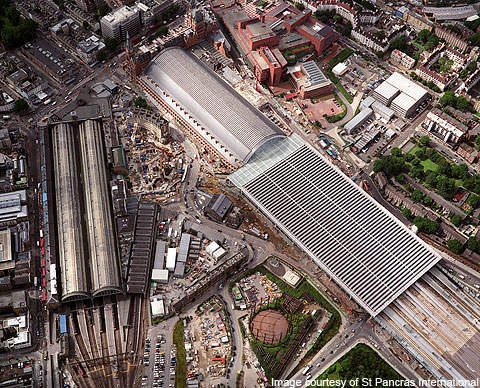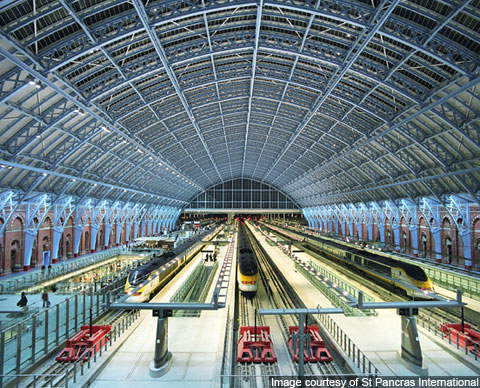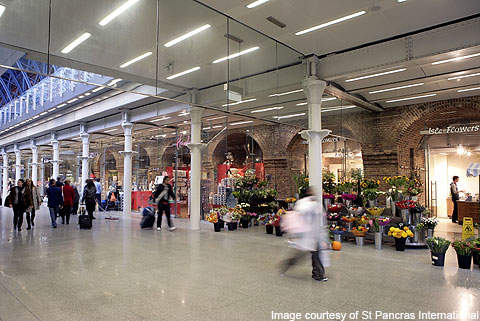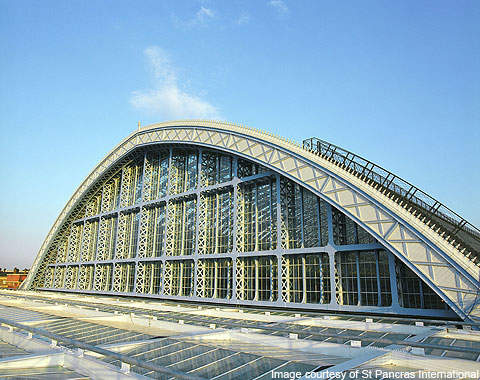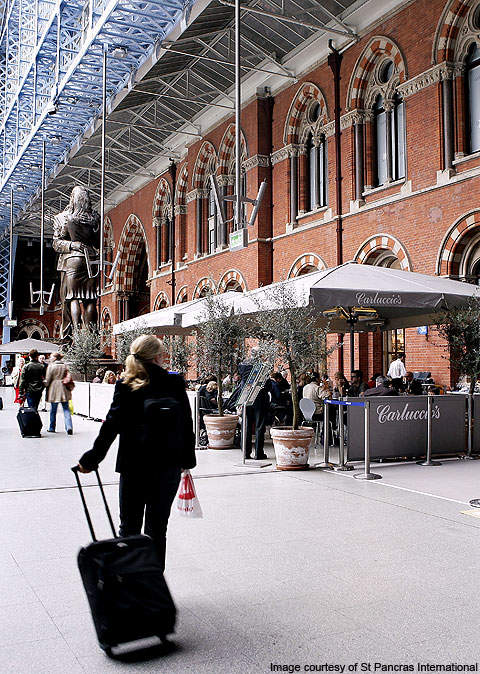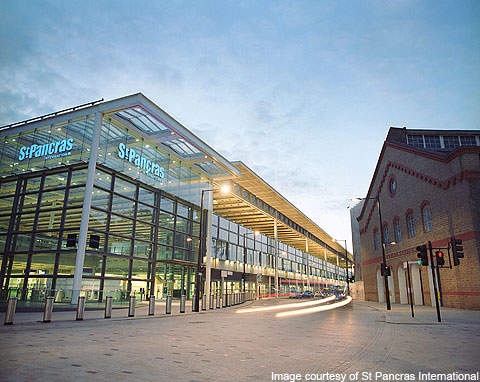St Pancras International Station is one of the biggest landmarks in London and serves as a gateway to Europe. It is used by 45 million passengers annually and is home to the Eurostar.
The station reopened in 2007 after completion of a £800m redevelopment and was renamed from St Pancras to St Pancras International. The redevelopment plan restored the station to its Victorian-era glory and added retail and hospitality areas.
St Pancras Station history
The original St Pancras was opened in 1868 after two years of construction. The front façade of the station became the Midland Great Hotel in 1876. The hotel was closed and transformed into the railway offices of the station, known as St Pancras Chambers, in 1935.
In 1966, demolition of the station was proposed but later withdrawn. The station was instead given Grade I-listing. Renovation of the station began in 2001.
St Pancras Chambers, which have not been in use since the 1980s, are to be converted into a five-star Marriott hotel.
Design and construction
The design for the original St Pancras Station was developed by William Barlow in 1863. The design for the 2001 redevelopment was undertaken by Sir Norman Foster and later modified by Rail Link Engineering’s chief architect Alistair Lansley. A consortium of EMCOR Group, Costain, O’Rourke and Bachy Soletanche was awarded the contract to carry out the redevelopment work on the station.
The key feature of William Barlow’s design is the Barlow train shed, which is considered to be one of the largest enclosed spaces in the world. The roof is 689ft long and 100ft high with arches spanning 240ft.
As part of the redevelopment plan, the Barlow train shed was extended by 200m to accommodate domestic rail services. About 18,000 panes of self-cleaning glass were added to the extension. The roof of the shed was also reglazed and repainted its original pale sky blue colour using about 200,000l of paint.
The project also included renovation of the masonry, mosaics and ironwork of the station using original materials. The brick and stonework of the station was cleaned and repaired to ensure that it resembles its original Victorian architecture.
The new station has 13 platforms, six of which are 455m long and are being used by the Eurostar. Since the redevelopment, the station has been divided into four zones – Rendezvous, Circle, Arcade and Market.
Rendezvous is the upper concourse of the station featuring Europe’s longest champagne bar. Circle is a retail zone featuring a range of fashion and food outlets. The Arcade includes several boutique retailers and the Market is a daily farmer’s market located near the main entrance of the station.
St Pancras Station is also part of a £6bn regeneration programme of sites along the route of the High Speed 1 (HS1) railway line. As part of the programme, London’s King Cross area will be developed into an attractive business and cultural region. The gas holders situated on the outskirts of the St Pancras Station will be deconstructed and relocated during the project.
Connecting services
St Pancras is connected to six underground lines – Circle, Hammersmith & City, Metropolitan, Northern, Piccadilly and Victoria. It is served by four operators – East Midlands, Eurostar, Southeastern and First Capital Connect.
East Midlands runs trains to Luton, Leicester, Kettering and Derby in the East Midlands and Yorkshire regions. First Capital Connect operates services to various cities including Bedford, St Albans, Wimbledon and Brighton. Southeastern runs high-speed connections over the HS1 to several destinations such as Chatham, Margate, Folkestone Central, Stratford and Ashford.
International services at the station are provided by Eurostar over HS1. Destinations covered by the operator include Spain, Italy, Germany and the Netherlands. In addition, the station provides direct services to various London airports including Heathrow, London Gatwick, Luton and London City Airport.
Facilities
The station features several facilities such as luggage storage, ATMs, photo booths, car parking, bicycle racks and taxi pick ups. It also contains several boutiques, bars and restaurants.
All passengers can access the departure lounge facilities at the station. A dedicated departure lounge for Eurostar passengers is also available. The departure lounges offer facilities for charging laptops and mobile phones.
The station also provides various facilities for the disabled with entrances located at street level providing level access to the lower concourse. Three lifts take passengers from the upper level to the train platforms and three more elevators are available in the Eurostar departure lounges and another in the international arrivals hall.
A 300-space car park operated by NCP is located at the rear of the station. Bicycle racks are located to the rear of the ground and first levels of the car park.
Technology
St Pancras Station features modern technology including Wi-Fi, touch-screen monitors and passenger information displays in all retail outlets. The station also features e-ticket collection machines.

